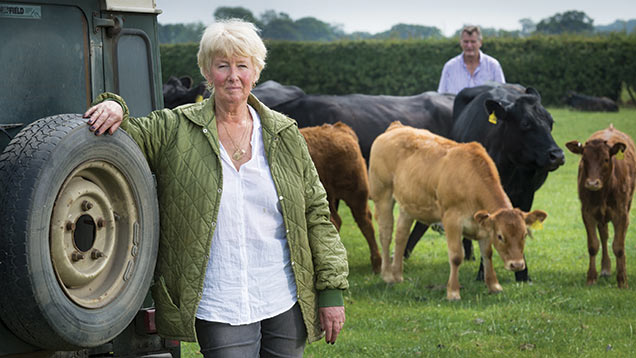Opinion: Autumn brings more hives of activity
 ©Jim Varney
©Jim Varney While we wait for the feed mixer lorry to come to mill and mix this season’s barley into a nutritious feed for the bullocks under the barn, John has resurrected the old Bomford to roll several bags of barley for their suppertime.
We stopped using the roller as the machine developed an illogical approach to its function. Sometimes the barley was rolled, sometimes it wasn’t.
Sometimes a lot of barley went through, sometimes a lot didn’t. And the whole operation took longer and longer, probably consuming vast amounts of electricity as well.
Read more from Bobbi Mothersdale
To improve efficiency, the rollers were reground and reset with new switches and springs inserted.
The roller worked well for a day or so, and then once we were reassured it was functioning well, it reverted back to deafening inefficiency.
The noise was made worse by the partial destruction of a barn wall where the roller is housed.
This came about when a mystery farmer – no-one owned up – attempted a version of ram raiding while tipping a load of barley. Such mishaps are brushed off – “It’s nowt.”
The open-plan barn revealed by these hit and run tactics has resulted in a better ventilation system and improved airflow into the main fold yard, all cited as benefits of the demolition job.
However, when I reversed over a bale loader, it was virtually a capital offence. “Women drivers!”
Out in the main farmyard, some tighter-than-tight turns with tractor and trailer and inept delivery lorries have seen the stables that house the coal shed, spray shed and former dog kennels gradually reduce in size.
As the pile of bricks besides these old stables gradually grows, John has pondered whether the best plan might be to demolish the whole collection of sheds, relocate the contents around other barn interiors on the farm, and give drivers a clear space to turn in.
This has set me thinking.
What I would really like is a front door to the farmhouse that is not a back door.
Our actual front door is never used – unless the postman decides not to brave the dogs with a parcel that needs signing for.
Everyone comes in through the porch door, into the utility room and then kitchen.
On the way wading through wellingtons and washing, tripping over baler band, falling over dogs, fighting with discarded overalls and kicking through a bale or two of straw.
If I had a side door that was a front door, my back door could be the farmers entrance (segregation rules, OK), and the side/front door could be the pristine, uncluttered entrance into the main farmhouse. Follow?
So what I need is a tractor and trailer. Some artful, neglectful and yet focused and well-aimed reversing, straight into the side of the farmhouse.
Then I should raise the suggestion that we might as well drop a doorframe into that newly formed gap in the wall than go to all the trouble of bricking it up again.
We currently have visitors back on the farm that require very little in the way of housing redesign.
They only have one entrance into their homes and they are quite content with that. The bees have returned after their summer holidays on the moors, bringing their homes with them in the back of my brother-in-law Geoff’s van.
We see the bees primarily as agents to pollinate the rape and bean flowers, and as we shall be drilling beans again, they are very welcome guests.
The hives are positioned so that the bees do not have to fly any great distances to reach their preferred crops. It is not an exact science where the hives are placed.
The bees can range over two miles apparently, but there is no need for them to expend any more energy than necessary. My life motto, also.
When John or Geoff are handling the hives, or bees, they usually gear up in veils, overalls with tight fitting elastic on the wrists and gauntlets.
John’s father, Pop, had no time for such a cover up job. He dealt with bees in an open neck shirt, or even bare chested, brushing the bees off casually if they landed on him and suffering no ill effects, or stings, at all.
John talks admiringly of how his father would approach a swarm carrying only a woven skep and sweep the bees off a branch into the basket with his bare hands. It makes me squirm just to think about it.
Geoff leaves his hives with plenty of nutrition over winter. Although honey has been extracted from the combs, there is still enough left to feed the bees. He also puts feeders with sugar solution in the hives, but honey is their preferred food.
One or two hives have sometimes been combined, with the former queen killed and a new swarm introduced. To prevent the original worker bees killing the new queen, several layers of newspaper are introduced between the two brood boxes.
By the time the old bees have eaten through the paper, and digested the latest scandals I presume, they accept the scent of the newcomer.
Despite all the magnanimous efforts made to ensure their well being, they are just hell bent on stinging someone. Last time I ended up with just one sting on my hand. Not bad when you consider the odds.
Bobbi Mothersdale and husband John own the 81ha Lowther Farm near York. They have a suckler herd, a flock of sheep and arable crops. Two daughters, three grandchildren, three dogs, assorted poultry, an overgrown garden and country pursuits also take up their time
